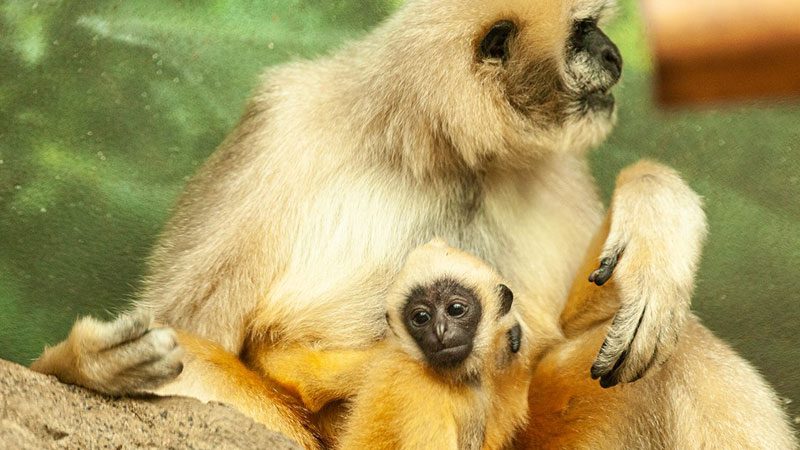
White-cheeked Gibbon
Helen Brach Primate House
Helen Brach Primate House is open 10 a.m.-4:30 p.m.
Did You Know?
- White-cheeked gibbons are born with blond fur, which then turns black after about a year and a half. When adults, males stay black while females become blond again.
- These tree-dwellers use a highly specialized mode of locomotion called brachiation. Instead of grasping at branches with their fingers, their hands form a loose hook around branches, enabling them to swing through the trees using a hand-over-hand motion.
- At dawn, pairs defend their territory with loud, ritualized duets that last around 10 minutes.
Don’t See the Animals?
Why aren’t animals visible at all times? To promote positive animal welfare, we provide animals with choices. They can choose to spend time in areas that are out of public view.

Take an Animal Home with You
Overview
Scientific Name: Nomascus leucogenys
Class: Mammals
Diet: Ripe fruits and leaves (also, invertebrates)
Range: Southeast Asia
Endangered Status: Critically Endangered
More Information
White-cheeked gibbons have long arms and legs that are adapted to moving through trees. Adult females have blond fur, while adult males are black with the white cheek patches that give them their name. Adults may reach 25 inches tall and weigh around 15–20 pounds on average. These are lesser apes, a separate family from great apes.
These gibbons live in flexible social groups that usually include an adult pair and their offspring. Important social activities include grooming, play behavior with infants, and vocalizations—sometimes accompanied with acrobatic behaviors. They spend nearly all their time in trees and rarely come to the ground. They travel about a mile per day through their range. They give birth after a seven-month gestation period, and young gibbons mature around 6 years of age.
